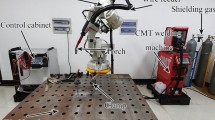Abstract
Postweld heat treatment is a common practice among building codes for welded steel structures and equipment to reduce the high as-welded residual stress level, improve the fracture toughness, and increase the critical size of acceptable defects. There are many discrepancies among international building codes for storage spheres, pressure vessels, and welded structure components about parameters such as duration and temperature for postweld heat treatments. Furthermore, the codes frequently omit the top number of thermal cycles, which the structure may support to maintain the mechanical properties and toughness in an acceptable level, keeping the physical integrity of the equipment. The present work analyzes the effect of duration of the postweld heat treatments on the mechanical properties and fracture toughness of a carbon-manganese steel of specification ASTM A-516 G 70, which frequently is used to build spheres and pressure vessels in the petrochemical industry. The regions corresponding to the base metal (BM) and heat-affected zone (HAZ) were studied. Through the results obtained from the tensile tests, hardness measurements, Charpy V-notch impact and crack-tip opening displacement (CTOD) testing, and microstructural characterization, it is concluded that the mechanical properties and fracture toughness were reduced by increasing the time of the postweld heat treatment. The degradation of the original properties of the steel is attributed to the changes that occurred in the microstructure. With the welding procedure used, it was verified that the fracture resistance of the HAZ was higher than that of the BM.
Similar content being viewed by others
References
J.E. Cantwell: Corrosion 88, St. Louis, MO, 1988, paper no. 157.
ASME Boiler and Pressure Vessel Code, Section VIII, Dvisions 1 and 2, ASME, Fairfield, NJ.
Standard Specification for Pressure Vessel Plates, Carbon Steel for Moderate and Lower Temperature Service, ASTM A 516, ASTM, Philadelphia, PA.
AWS D.I.1-81, 5th ed., American National Standards Institute, New York, NY, 1981.
Standard Test Methods for Tension Testing of Metallic Materials [Metric], ASTM E 8M, ASTM, Philadelphia, PA, 1989.
Standard Methods for Rockwell Hardness and Rockwell Superficial Hardness of Metallic Materials, ASTM E 18, ASTM, Philadelphia, PA, 1989.
Standard Methods for Microhardness of Materials, ASTM E-384, ASTM, Philadelphia, PA, 1984.
Standard Methods for Notched Bar Impact Testing of Metallic Materials, ASTM E 23, ASTM, Philadelphia, PA, 1980.
Standard Terminology Relating to Fracture Testing, ASTM E 616, Philadelphia, PA, 1982.
Methods for Crack Opening Displacement (COD) Testing, BS 5762/79, BSI, London, UK, 1979.
H.G. Squirrell: Recommended Procedures for the Crack Opening Displacement (CTOD) Testing of Weldments, Welding Institute Research, Cambridge, UK, 1986, No. 31.
P.J. Konkol: Effect of Long-Time Post Weld Heat Treatment on the Properties of Constructional Steel Weldements, Welding Research Council, No. 330.
R.D. Stout: Postweld Heat Treatment of Pressure Vessels, Welding Research Council, New York, NY, 1985, No. 305.
P.L. Threadgill: Welding Research Report No.253, Welding Research Council, New York, NY, 1984.
D.P. Fairchild: The Effects of Post Weld Heat Treatment on the Microstructure and Toughness of Offshore Platform Steels, Exxon Production Research Company.
C. Bonnet: Soudage Tech Connexes, 1980, July–Aug., pp. 209–27.
A.M. Pope: “Brittle Fracture in Welded Joints,” Internal Report, Petrobras, Rio de Janeiro, Brazil (in Portuguese).
Metals Handbook, 9th ed., ASM, Metals Park, OH, 1978, vol. 1.
G.R. Wang: Microalloying Additions and HAZ Fracture Toughness in HSLA Steels, Welding Research Supplement, Welding Research Council, New York, NY, 1990, pp. 14–22.
R.E. Doubly: HAZ Toughness of Structural and Pressure Vessel Steels—Improvement and Prediction, Welding Research Council, New York, NY, Aug. 1979, pp. 225–37.
C. Thaulow, A.J. Paauw, A. Gunleiksrud, and O.J. Naess: Metal Construction, vol. 17, No. 2, February 1985, pp. 94–99.
R. Farrar: Metal Constr., 1987, vol. 19 (17), pp. 392–97.
G.M. Evans: Welding J., 1986, pp. 3265–3345.
R.E. Douby: Welding Institute Report No. 14, Welding Research Council, New York, NY, 1976.
H. Toskoaki: Nippon Steel Technical Report No. 36, Nippon Steel, Jan. 1988.
K. Uchino: Development of 50kgf/mm 2 Glass Steel for Offshore Structural Use with Superior HAZ Critical CTOD, Welding Institute Research, Cambridge, UK, 1980.
K.E. Dorschu: Welding Research Report Bulletin No. 231, Welding Research Council, New York, USA.
R.A. Swift: Welding J., 1971, vol. 50 (8).
Author information
Authors and Affiliations
Rights and permissions
About this article
Cite this article
Pimenta, G., Bastian, F. Effect of long-time postweld heat treatments on the mechanical properties of a carbon-manganese pressure vessel steel. J. of Materi Eng and Perform 10, 192–202 (2001). https://doi.org/10.1361/105994901770345213
Received:
Revised:
Issue Date:
DOI: https://doi.org/10.1361/105994901770345213




